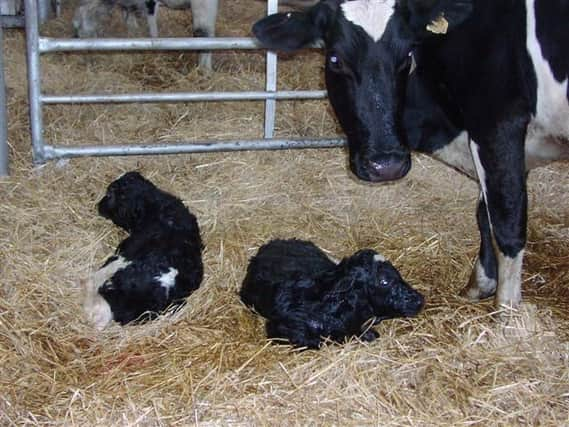Reproductive efficiency affects every financial aspect of the business


Some use calving interval, some 100 day in calf rate or more latterly many progressive dairies have moved to 21 day pregnancy rate. This is considered a timely measure of reproductive efficiency taking into account both the proportion of cows inseminated that were “eligible” to be served (submission rate – Target >60%, seek help if less than 50%) and the chances of those cows that have been served then becoming pregnant (conception rate) every 21 days.
Cows are considered “eligible” to be bred if they have passed the voluntary waiting period (commonly between 40-70 days), not pregnant and not marked down as barren or not to bred ongoing. On average, most all year round calving herds aim to have a pregnancy rate above 20% – if it’s below 16% – seek help from your breeding advisor and vet. Smaller herds tend to use 100 day in calf rate, which although is not as timely as 21 day pregnancy rate is considered a more timely measure than calving interval. It is simply calculated as the percentage of cows pregnant by 100 days after calving. Top all year round calving herds can achieve greater than 55% of cows in calf by 100 days – if it’s below 45% in your herd seek help from your breed advisor and vet.
Advertisement
Hide AdAdvertisement
Hide AdHerds with a high pregnancy rate tend to have a high percentage of cows in calf by 100 days post calving. This provides for a lower average days in milk and higher average milk production. In these herds fewer cows have overly long dry periods making it easier to manage body condition across late lactation. Two key drivers to achieving great reproduction are 1. ensuring cow health pre and post calving is optimal to maximise first service conception rate and 2. ensuring cows receive their first insemination in a timely fashion post calving. In every herd you can determine when you aim to have 100% of cows served by for the first time. For herds employing a means of oestrus detection for a period of time following up with a “sweeping” synchronisation for those animals not bred by a predetermined time- a great rule of thumb is to look at the proportion of the herd bred by 80 days in milk or by taking your voluntary waiting period and adding 30 days (eg. 40d VWP + 30 days = 70 days in milk) – many herds have a target of 85% bred within this period. Thereafter consider hormone intervention under veterinary guidance to those not inseminated by this target period – ideally intervention that results in 100% of cows receiving an insemination within 10 days. If the number of cows requiring treatment at this point is greater than 15-20% consider why this may be. In many herds a significant proportion of cows are bred for the first time after 100 days in milk, not through choice but due to cows transitioning poorly into the milking herd or other reasons such as poor oestrus detection or expression. Early detection of cows that have experienced difficulties with transitioning from dry to milking is important and commonly herds look to have observed oestrus in 80% of cows by 50 days in milk.
In summary ask yourself the following questions:
1. What proportion of my herd do I see oestrus in before 50 days in milk? – If it’s less than 80% you need to work out why with your farm team – look to how you manage dry and fresh cows and how you detect oestrus.
2. What proportion of my herd do I serve by 80 days in milk? If less than 85% consider limiting factors affecting oestrus detection or expression. If your submission rate is less than 50% seek assistance from your breed advisor and vet.
3. What is my pregnancy rate? In the absence of pregnancy rate use 100 day in calf rate. If these are less than your farm’s target reach out for assistance from your farm team. If you are meeting your farm’s goals consider the opportunities great reproduction brings – have you now have the potential be more selective with your culls, sell surplus stock as a cash crop, reduce your disease risk and expand the herd from within, or optimise genetic selection of heifers through the use of sexed genetics and genomic technologies.